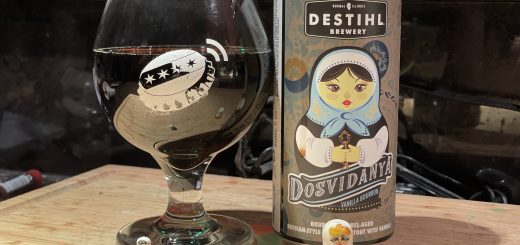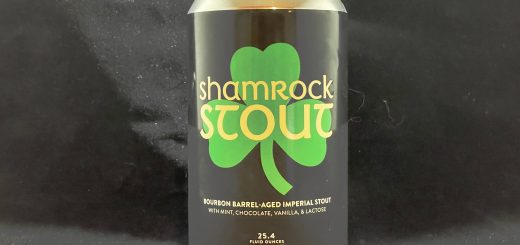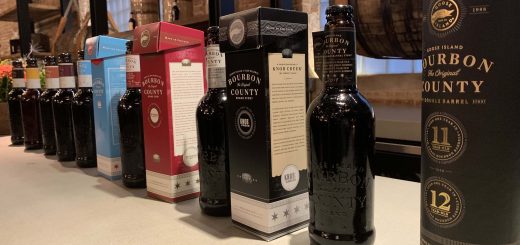Bourbon County X: The People’s Choice Survey Results
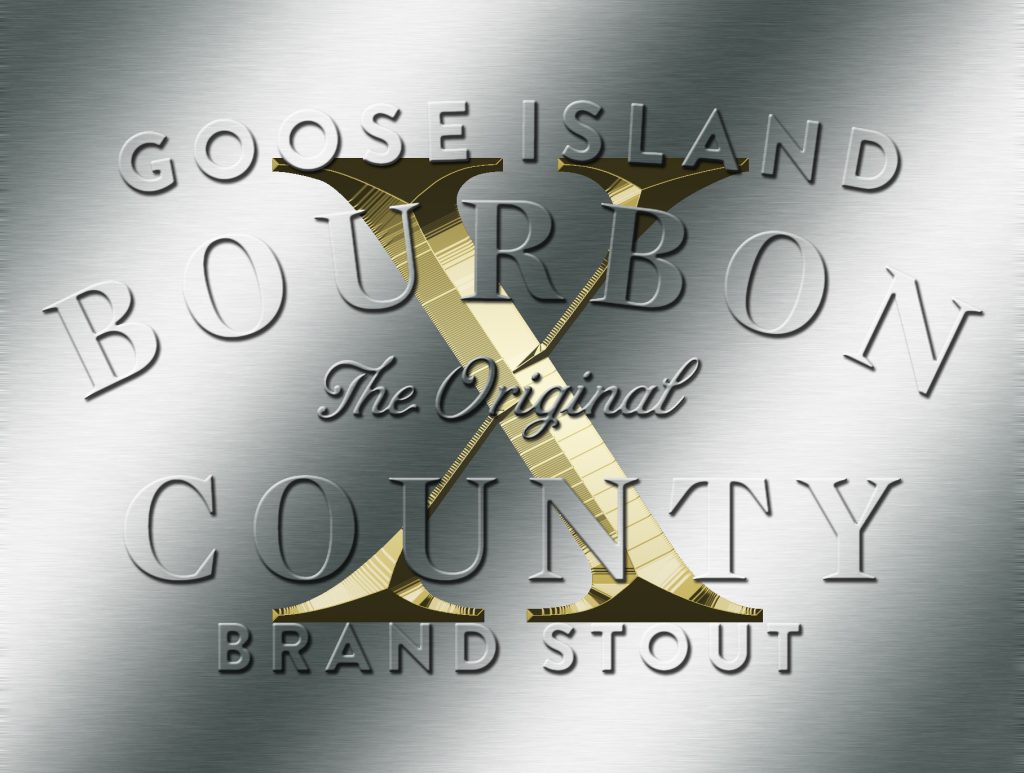
Although Goose Island’s Bourbon County Brand Stout has been made since 1995 (or was it 1992?), the celebrated release has moved beyond just a big beer aged in bourbon barrels in a lot of ways. 2020 marks the 11th year that the brewery has released variants of their Bourbon County brand, which has added ingredients, changed barrel treatments, and even shifted styles over the years. So, we thought it was a good time to look back on the first ten years of variants on the Bourbon County brand, from 2010 to 2019.
We surveyed some of our good friends in the world of beer – professional writers, bloggers, fellow podcasters, specialty shop owners, and even Goose Island brewers – to find out their top variants of all time, and posted the results here. Reactions were…mixed. Ranging from mild surprise to righteous indignation, we certainly got the feeling that a few favorites were left off the list.
So we created a survey to share on social media for anyone and everyone to rank their all-time favorite BCBS variants. Of course, there was still some controversy about what was included, but we’ll sum up the definition of variant here:
- Variant for purposes of the survey means part of the Bourbon County Brand line-up, initially released on or around Black Friday, and bottled and sold. Notable beers that were excluded from this list were Baudoinia and Templeton Rye (both never officially bottled and sold) and King Henry (not labeled as Bourbon County).
- Yes, we know people have strong feelings about King Henry not being included, but it is the odd one out. It’s definitely in the Bourbon County extended family (a barleywine aged in 2010 Bourbon County Rare barrels), but it wasn’t released under the label of Bourbon County – unlike every other beer on the list.
- Also, the 2015 infected variants were not included as options on the survey. So, although 42 variants have been released over the years, the survey only had 39 to choose from when leaving off 2015’s Proprietor’s, Coffee, and Barleywine.
It was a long survey, and we gathered 127 responses – which we are honestly pretty happy with, as it qualifies as marginally statistically valid! Also, Goose Island had nothing to do with this, other than making the beers we love to argue about every year.
Scoring:
In addition to simply sharing frequency data for people’s rankings, we wanted to see how beers fared when assigned a weighted score. For the results that include scores, we used this method to assign points. Each #1 ranking was equal to 10 points; each #2 ranking was equal to 9 points; and that goes on down to a #10 ranking equaling 1 point. Totals were added for every beer listed, and that is how scores were calculated.
Scroll down to see the results of our survey and some of our own observations to follow the data.
If you want to see a Google Sheet with the raw data we gathered, click here.
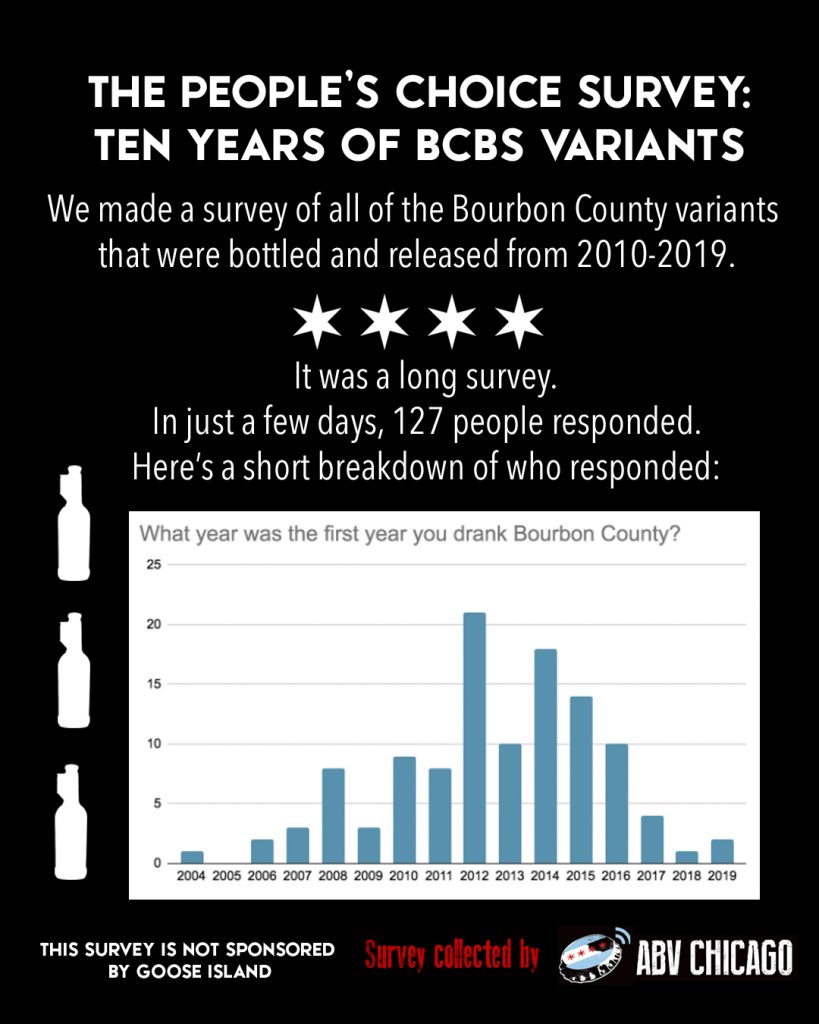
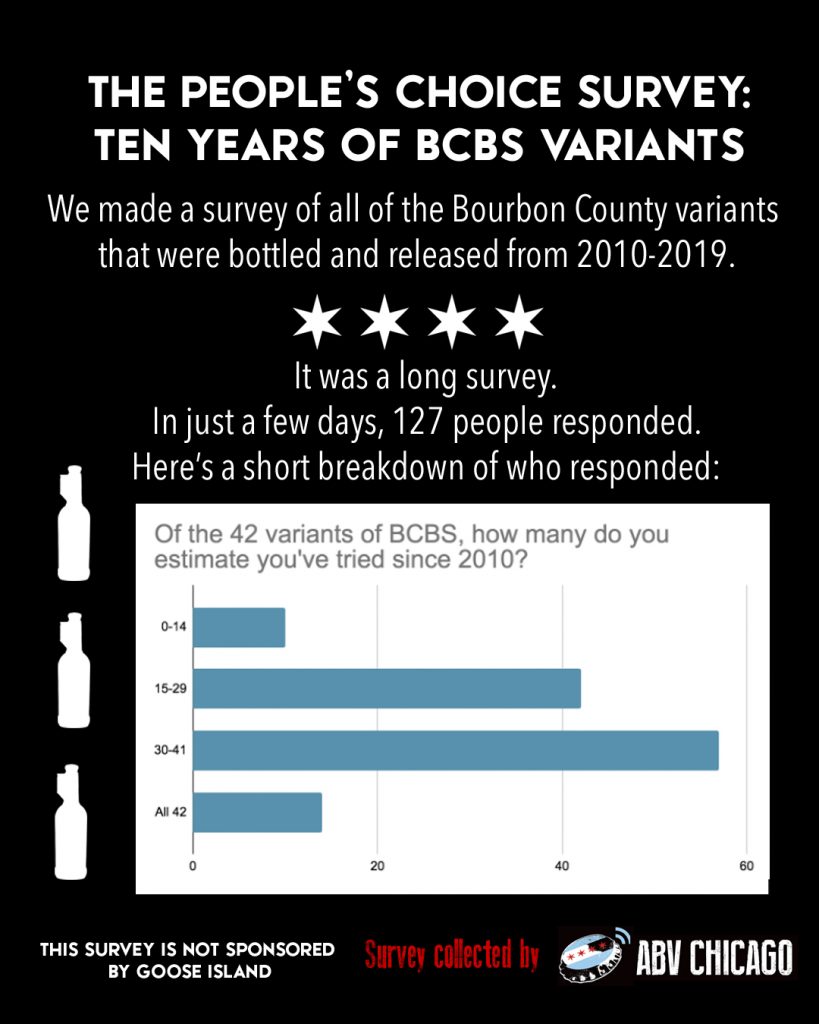
Most Frequent #1
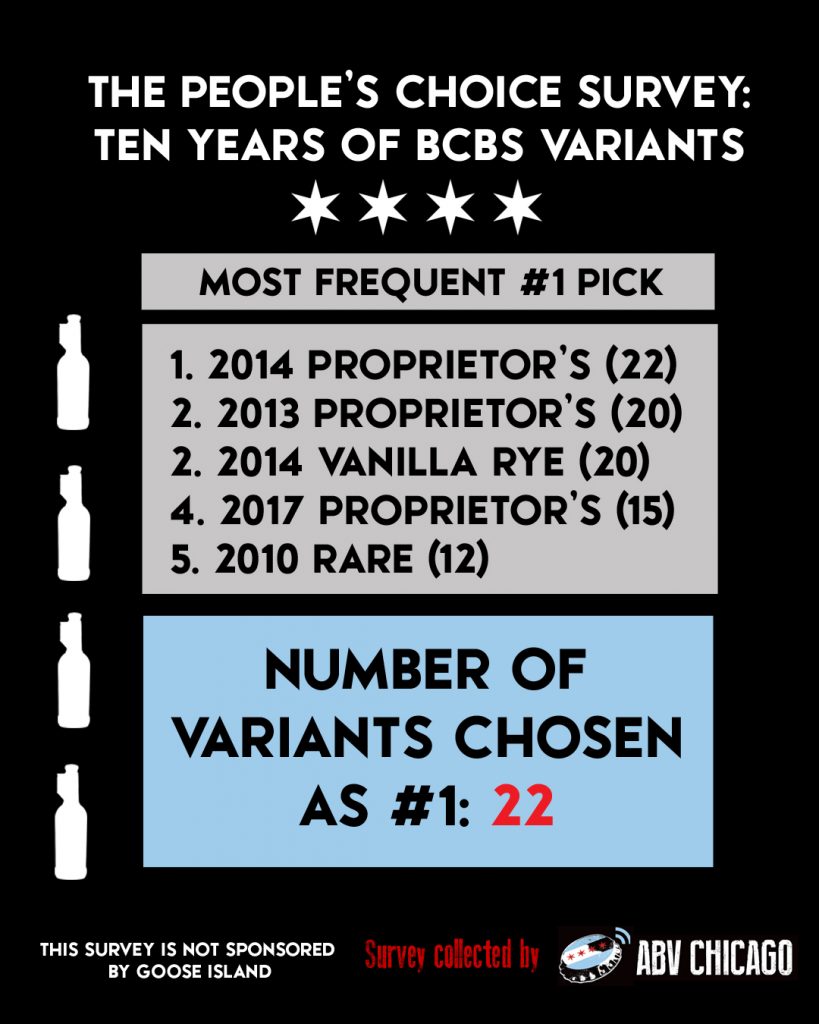
Weighted Score Total
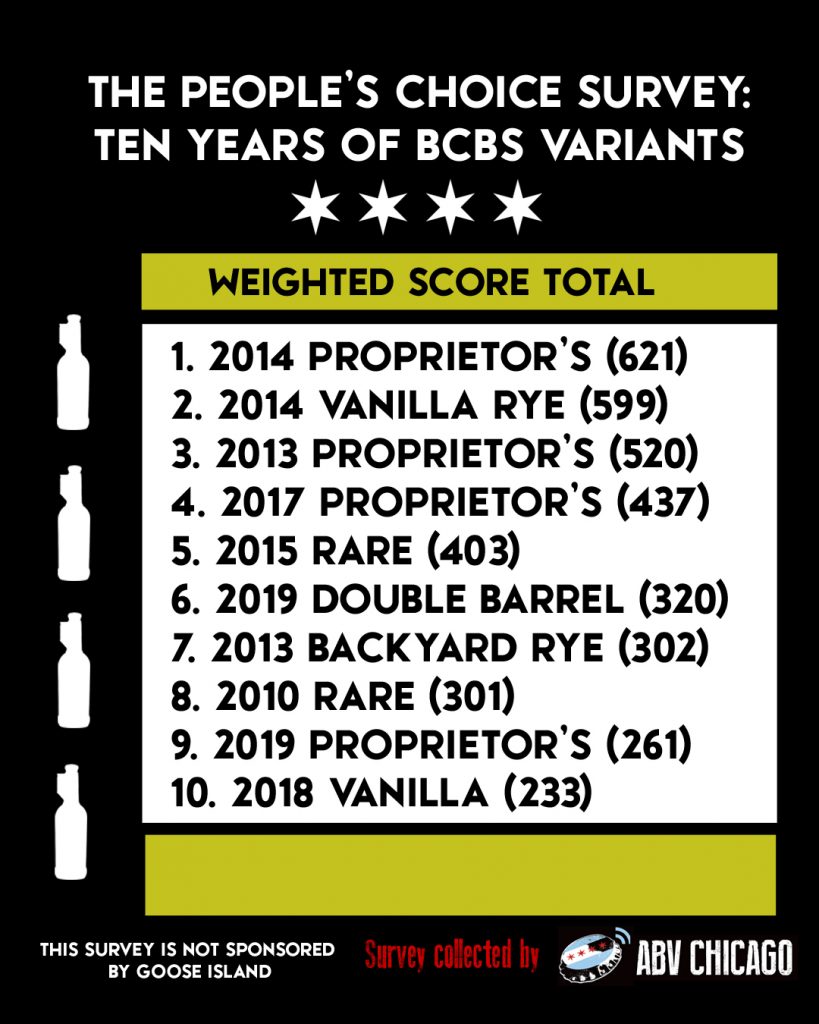
Top of the Props
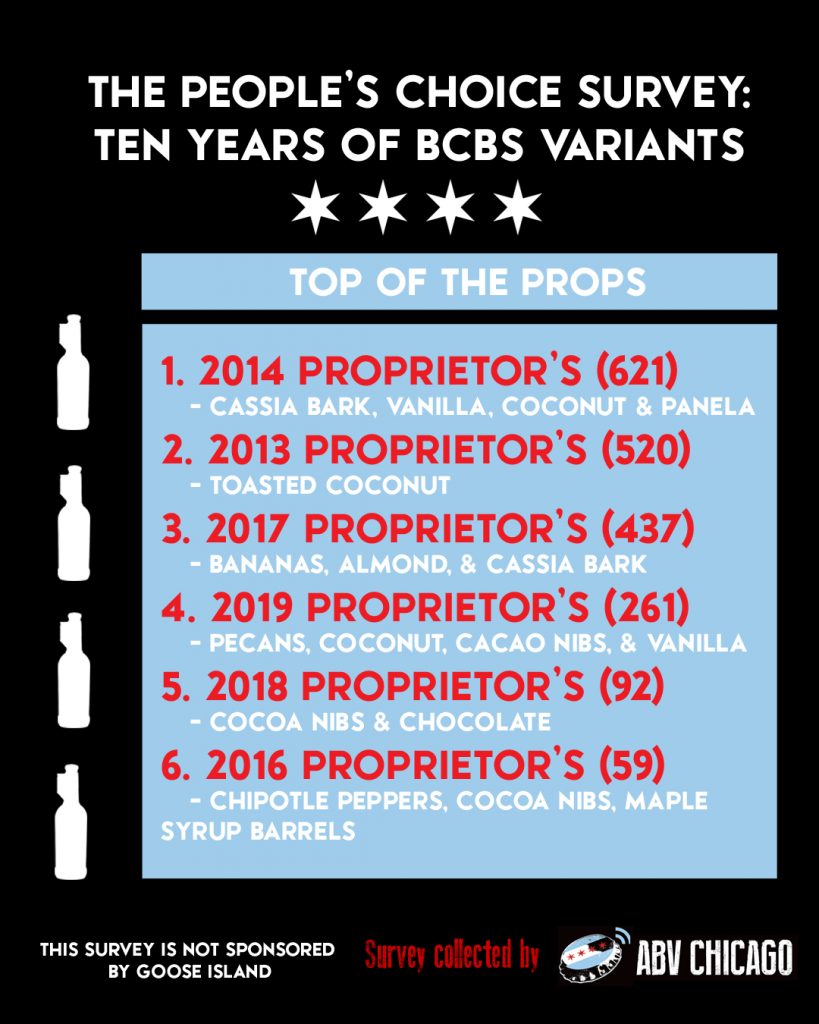
Fruited Variants
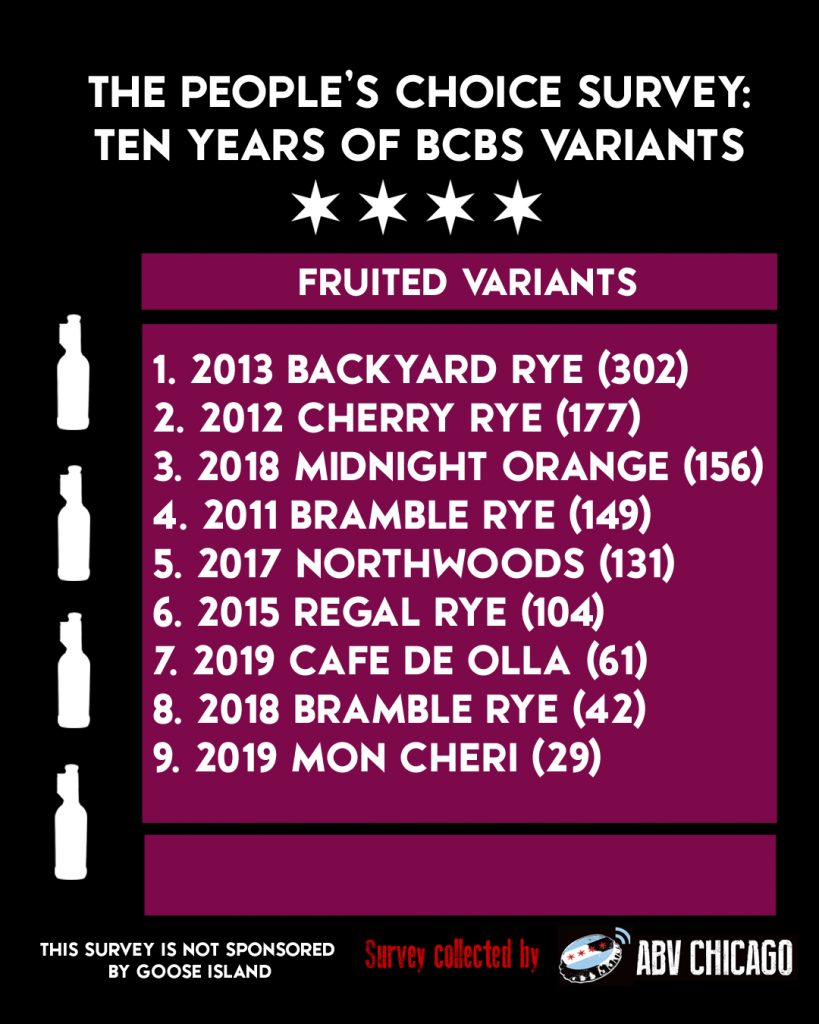
Special Barrels
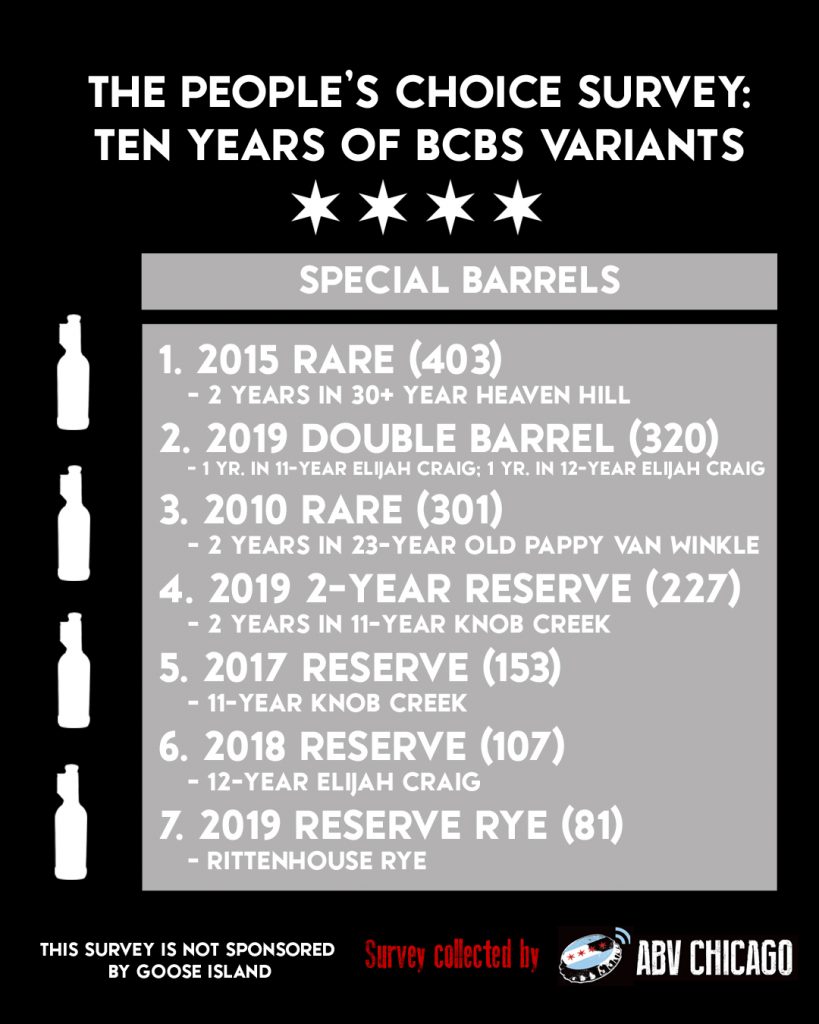
Non-Stouts or The ‘Wines
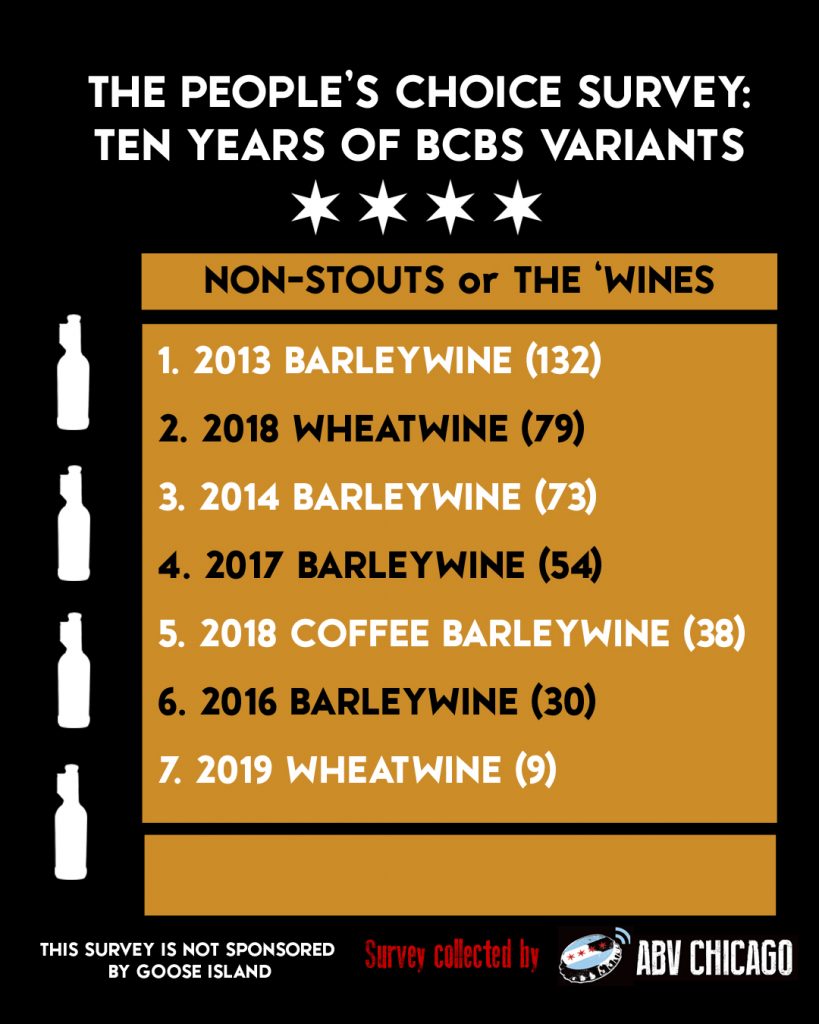
With Coffee
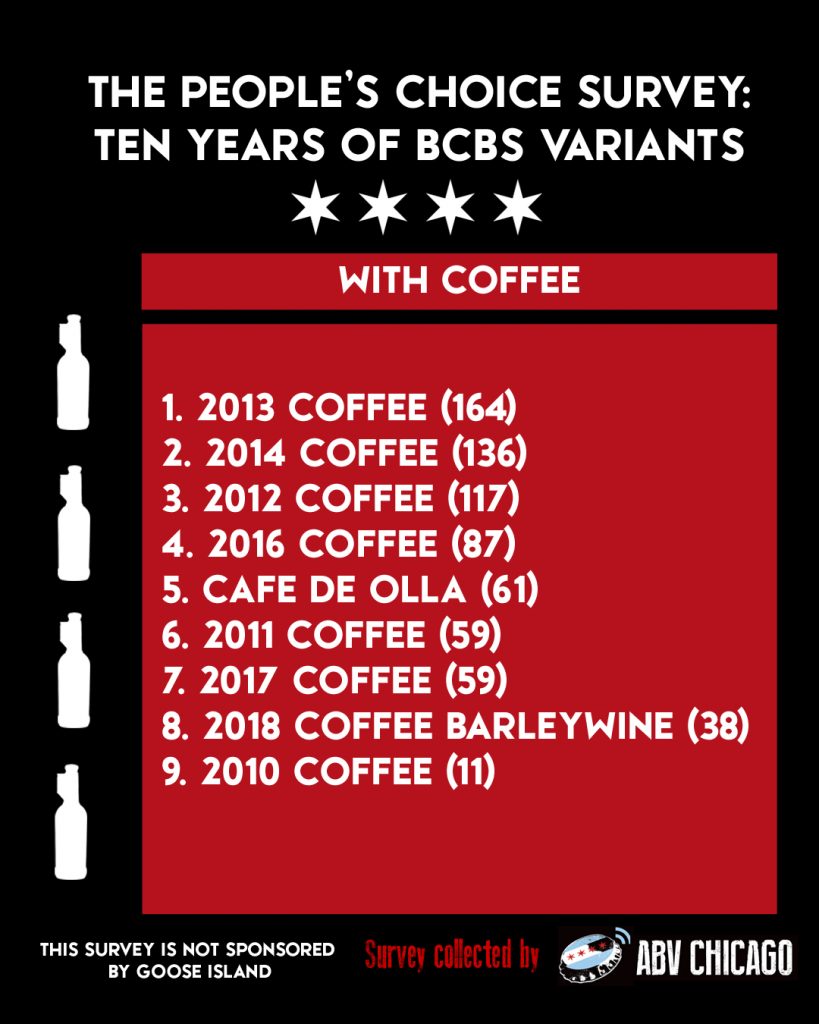
Year By Average Variant Score
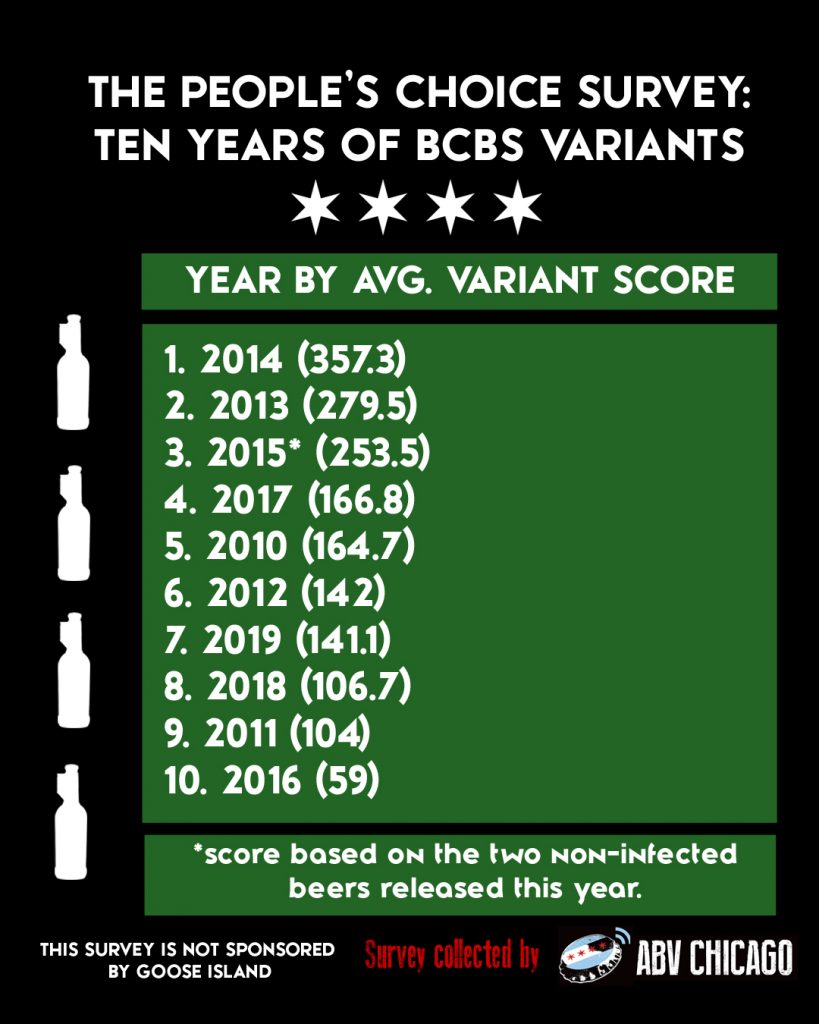
Lowest Scoring Variants
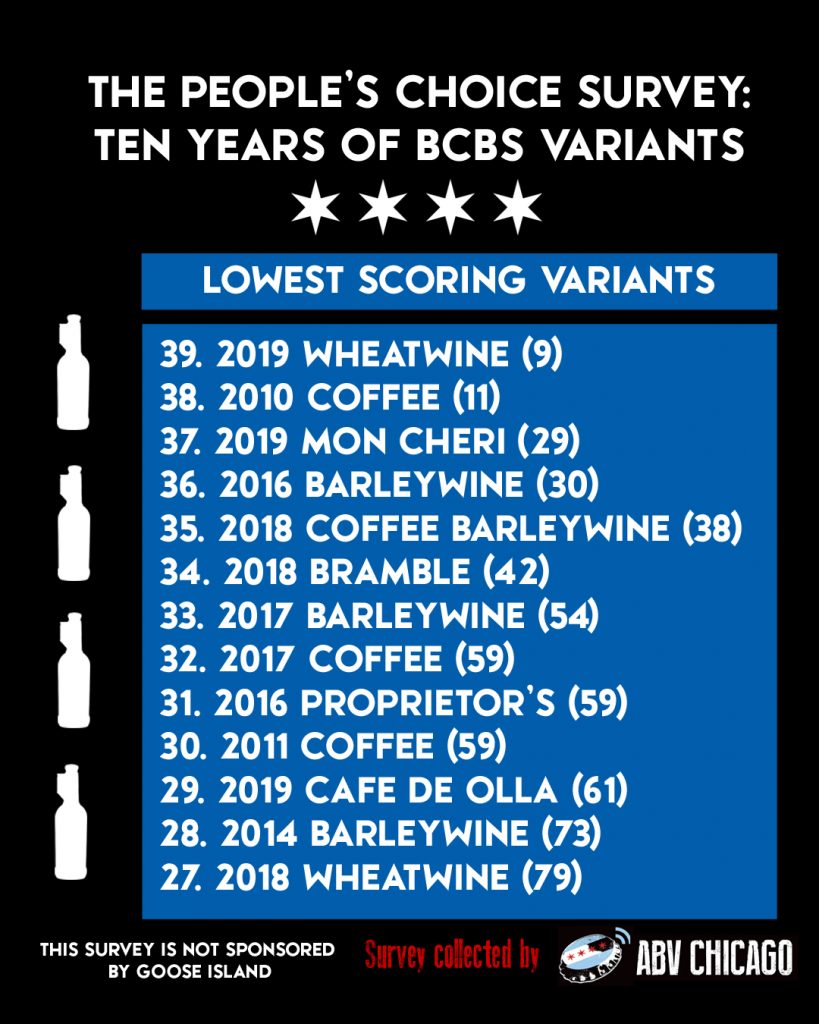
Barleywine is…Meh?
Somewhat unsurprisingly, there is less love for the barleywine and wheatwine varieties than the stouts – mostly because barleywines still fall outside of more mainstream acceptance than stouts, even though the style is starting to gain more of a cult following. That being said, Goose Island’s barleywines have never had the reputation that other breweries have with their barleywines – Side Project, Anchorage, Holy Mountain, and even Revolution, for example. The only barleywine Goose has made that could stand with those in terms of reputation is King Henry, and as we stated before, it doesn’t fit our definition of BCBS variant.
The Memory Fades
When you look at the data for survey respondents’ first experience with Bourbon County, you see that 2012 was a real turning point year for many, and the following years had even more people getting into big barrel-aged stouts. That means that some of the earlier variants’ scores suffer by comparison, as a significant number of respondents probably never had the 2010 or 2011 variants. Even the likelihood of those who first tried BCBS in 2014 or later having gone back to the earlier variant is less and less, so older variants are going to slip. That being said…
Better With Age
Average scores by variant really peaked in the middle of the decade (2013 & 2014 especially), and the two most recent years have a pretty low average. That looks like a bit of a downward trend, which could be explained…
Too Many Variants?
Though there were some outstanding highlights in 2018 and 2019, those years performed much lower than others, potentially due to the glut of variants being offered. Goose may be cannibalizing itself there, as the multitude of options in each year is going to split the vote in a somewhat significant way. (It is also possible that people just aren’t crazy about the beers from those years, and the ones that were the “best of the best” were also the hardest to get.)
Reviews Are Arbitrary
It’s a bit silly to try and create empirical data from objective experiences, and that’s exactly what we’ve done here. But if you want to hear or read more arbitrary opinions in our extensive history of reviewing BCBS, scroll through this!
